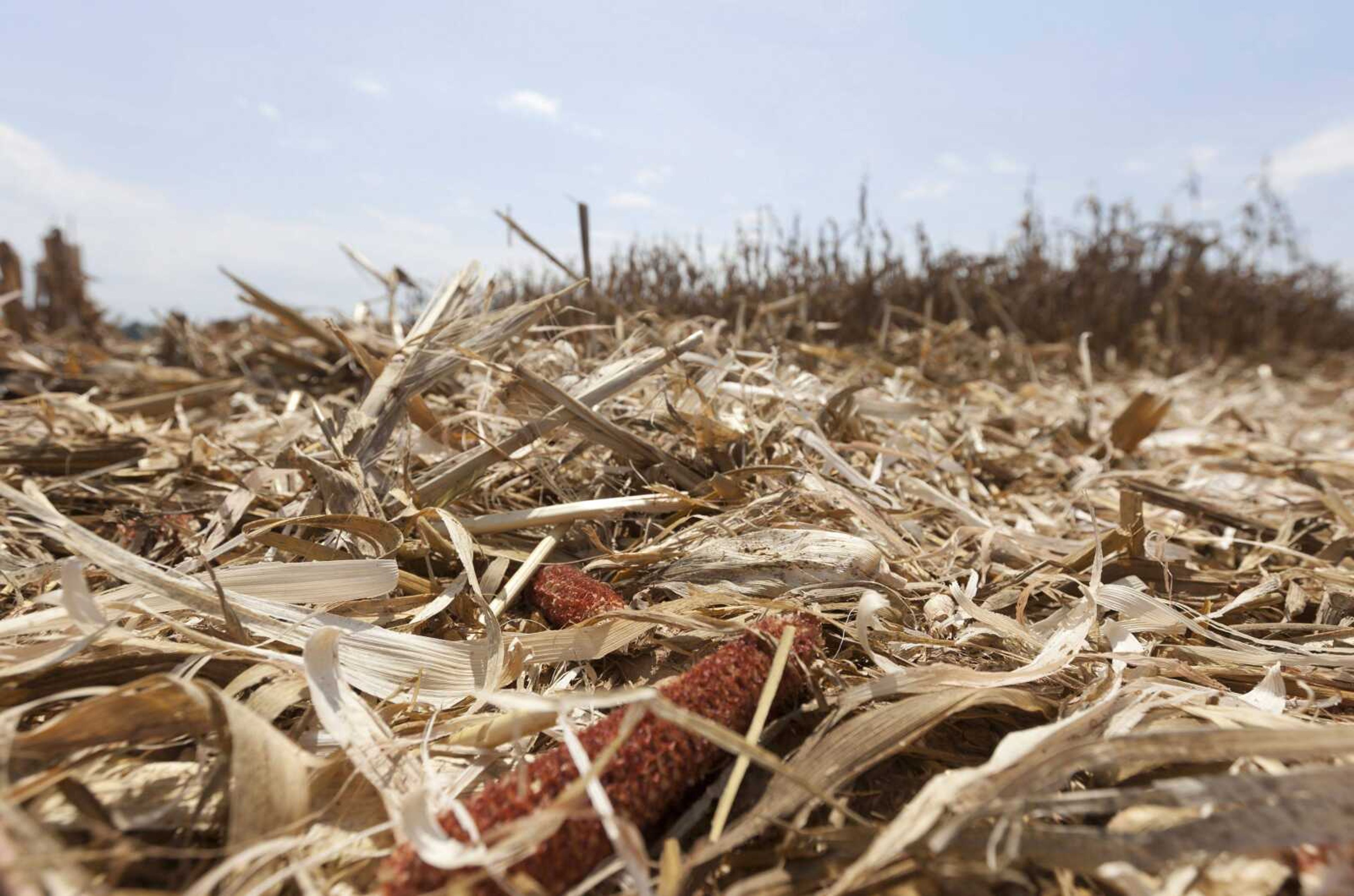Drought sparks nitrate concerns in livestock feed
Many farmers across the Midwest are abandoning ruined corn crops and salvaging what they can to feed to their animals, especially cattle. A University of Missouri veterinary professor says farmers need to be careful when feeding drought-damaged corn to their livestock...
Many farmers across the Midwest are abandoning ruined corn crops and salvaging what they can to feed to their animals, especially cattle.
A University of Missouri veterinary professor says farmers need to be careful when feeding drought-damaged corn to their livestock.
Tom Evans is an associate professor of veterinary pathobiology at the university's College of Veterinary Medicine. He says nitrate levels can accumulate in drought-stressed corn and pose a risk to animal health.
According to Anthony Ohmes, agronomy specialist for the University of Missouri Extension's Southeast Region and Mississippi County office, nitrate is the available form of nitrogen found in plants. Once in the plant, nitrate is converted and used for growth and seed production.
"Corn and plants in the sorghum family, such as milo and johnsongrass, as well as other weed species, have a high demand for nitrogen and accumulate nitrate in the plant, which will be used throughout the vegetative and reproductive stages of development," Ohmes says. "During a drought, seed production is limited and therefore nitrate converted for seed production is reduced. However, the high-nitrogen-demanding plants do not reduce nitrogen uptake and therefore nitrate remains accumulated in the vegetative parts of the plant, in particular the stalks."
Ohmes says it's typical for nitrate to be at its highest concentration in the bottom 18 inches of the stalk, but this season "nitrate concentrations can be found in excess all the way up the stalk."
That concentration can be deadly to cattle.
"Under normal levels, the cow's rumen (stomach) converts nitrate to nitrite and eventually proteins, but when excess nitrate is in the rumen the excess nitrite enters the bloodstream and depletes the blood of oxygen, causing a host of problems, the extreme of which is sudden death of the animal," Ohmes says.
It's important for farmers to take the proper precautions before feeding baled cornstalks to livestock. They "need to have a representative sample tested from each of their fields before investing the time and money in baling, or if already baled, from their bales before feeding," Ohmes says. "University of Missouri Extension offices have a quick 'qualitative' spot test that can confirm the presence of nitrate prior to baling and feeding. However, since many of the samples that our offices have been testing in this area are showing high concentrations of nitrate, further 'quantitative' lab analysis should be completed before making a decision to include cornstalks or sorghum species in the feed ration."
He offers a warning on collecting samples: "The results are only as good as the sample, so try to sample throughout your field, and even with a thorough sample in this drought year, one needs to use extreme caution when deciding to feed stalks to the herd."
The Associated Press contributed to this report.
Connect with the Southeast Missourian Newsroom:
For corrections to this story or other insights for the editor, click here. To submit a letter to the editor, click here. To learn about the Southeast Missourian’s AI Policy, click here.






